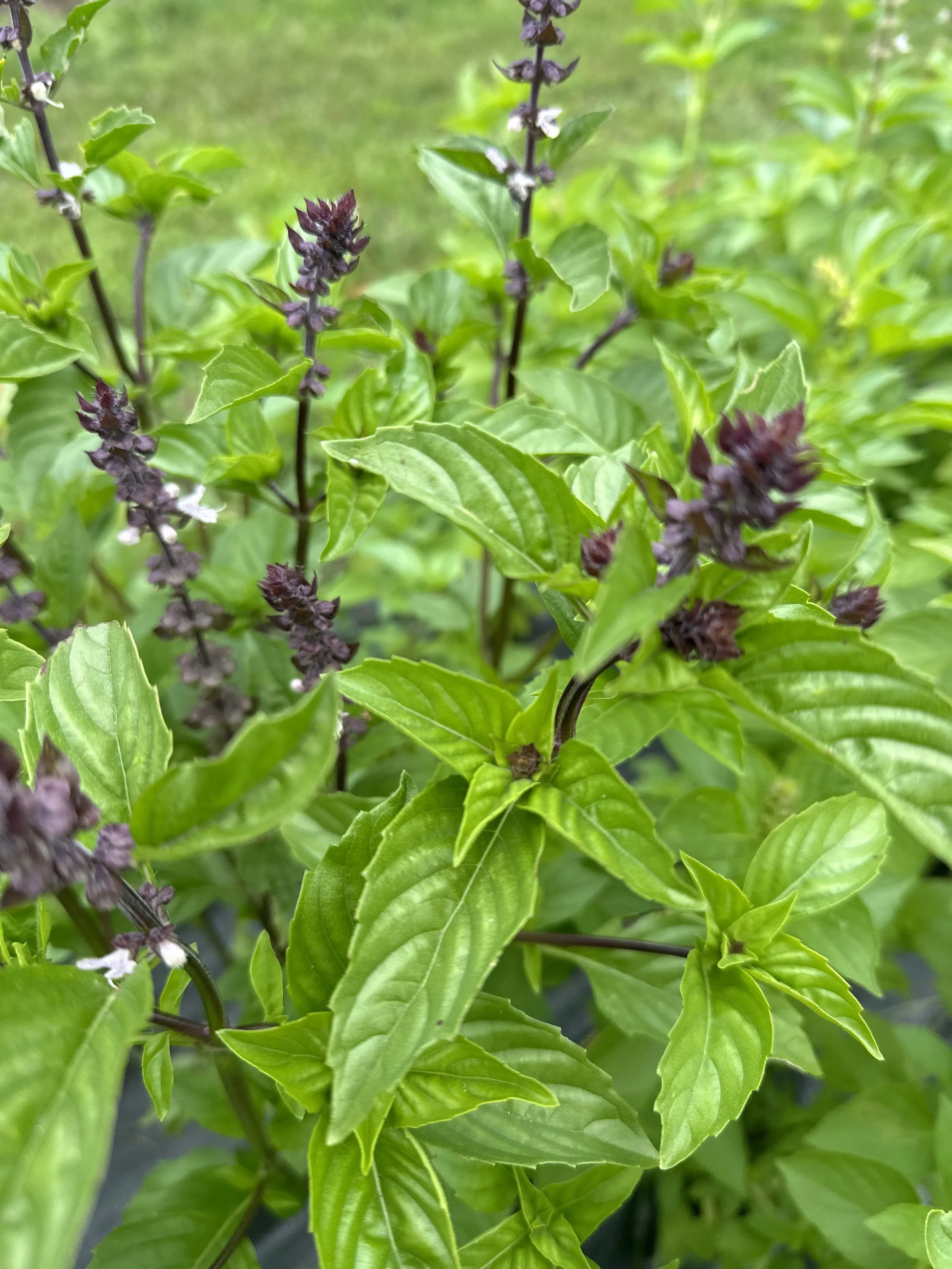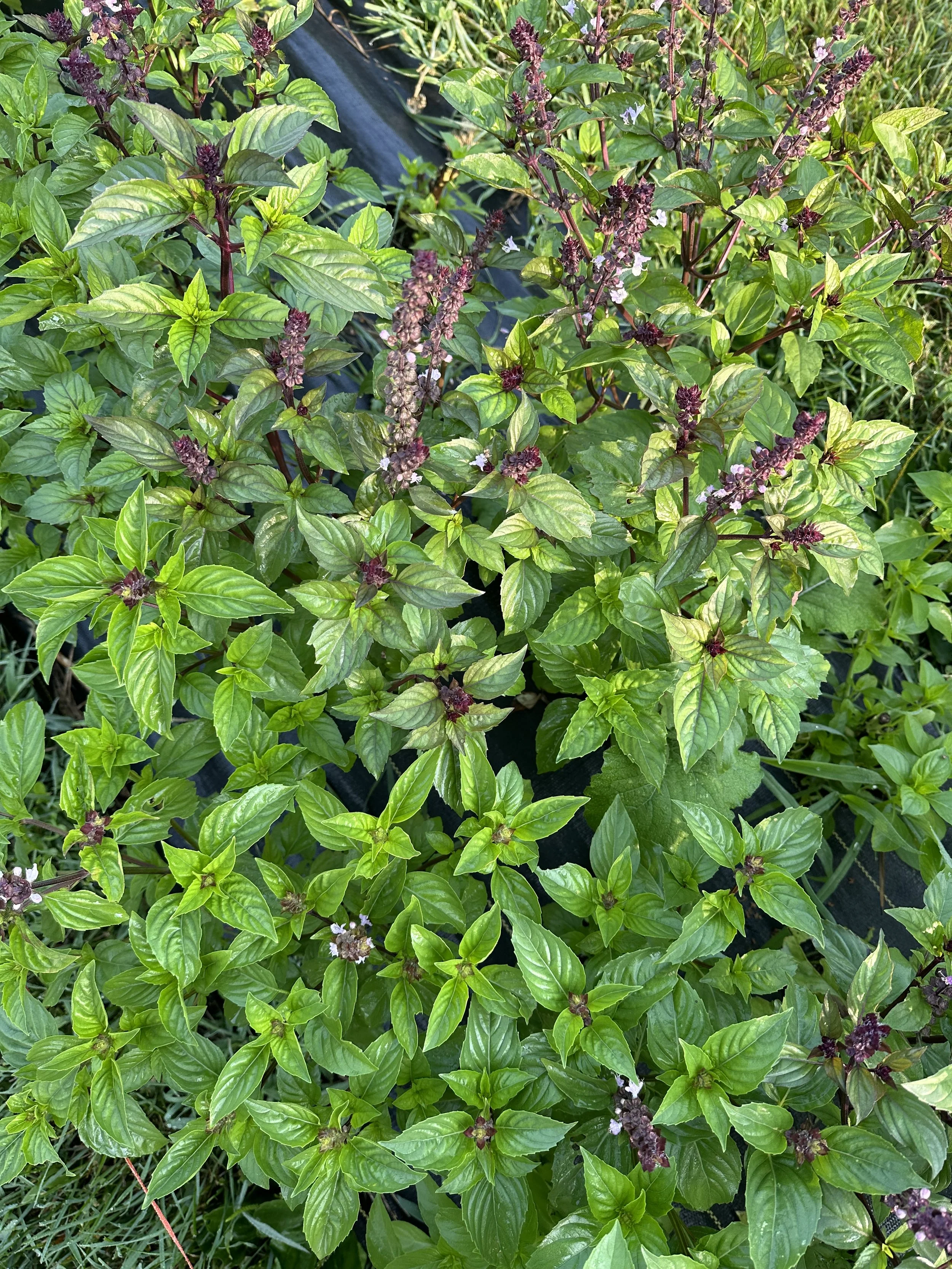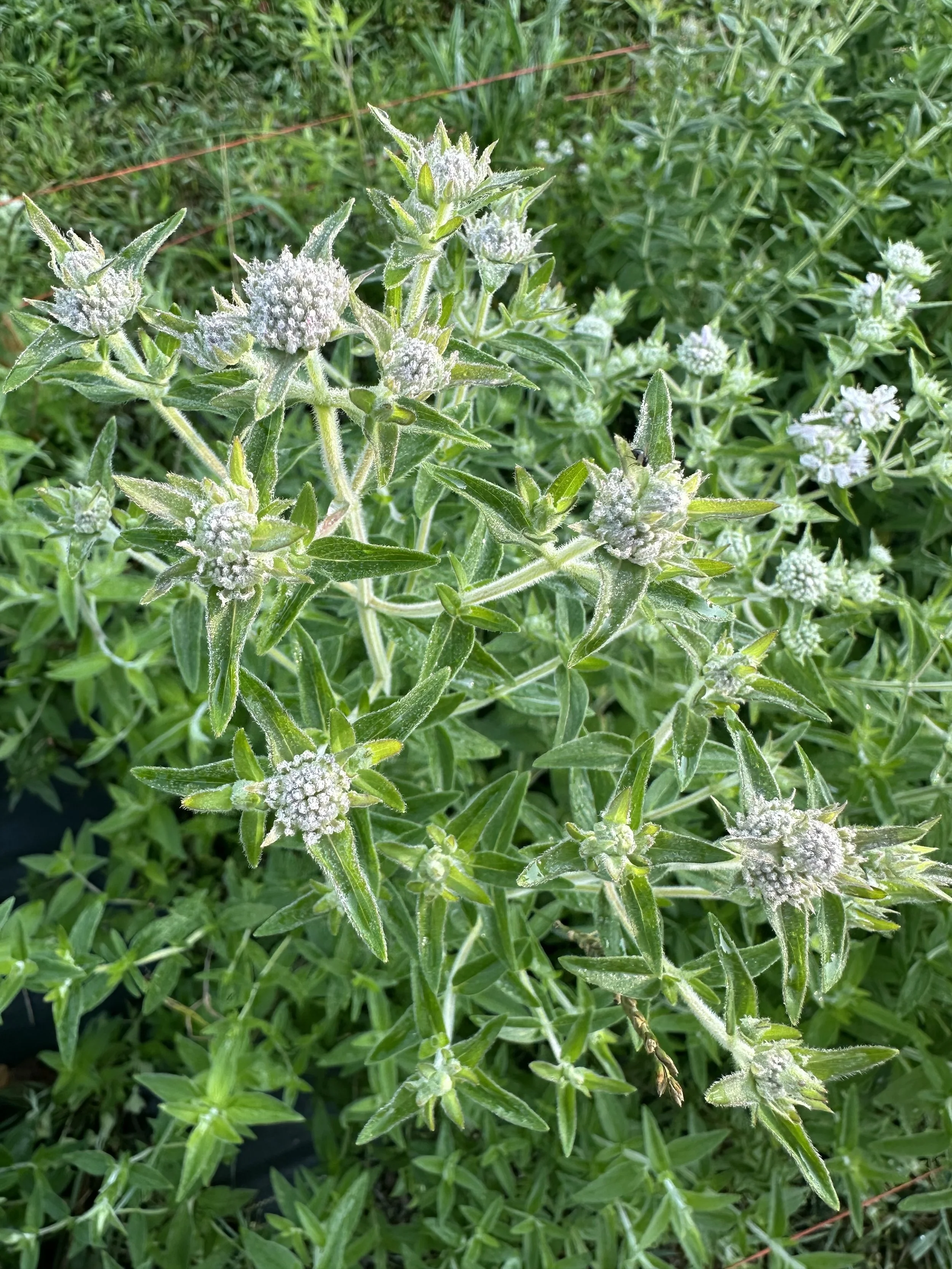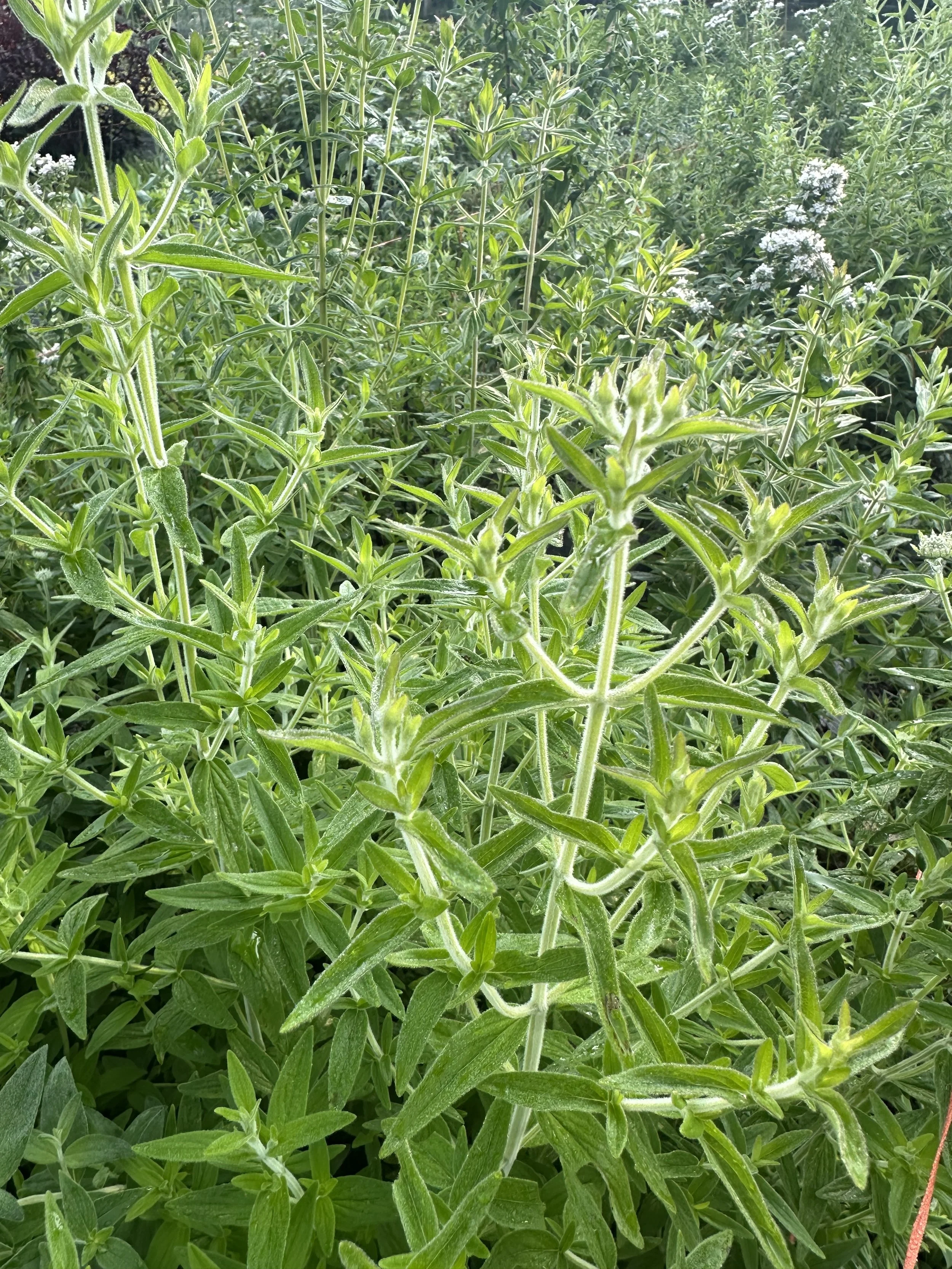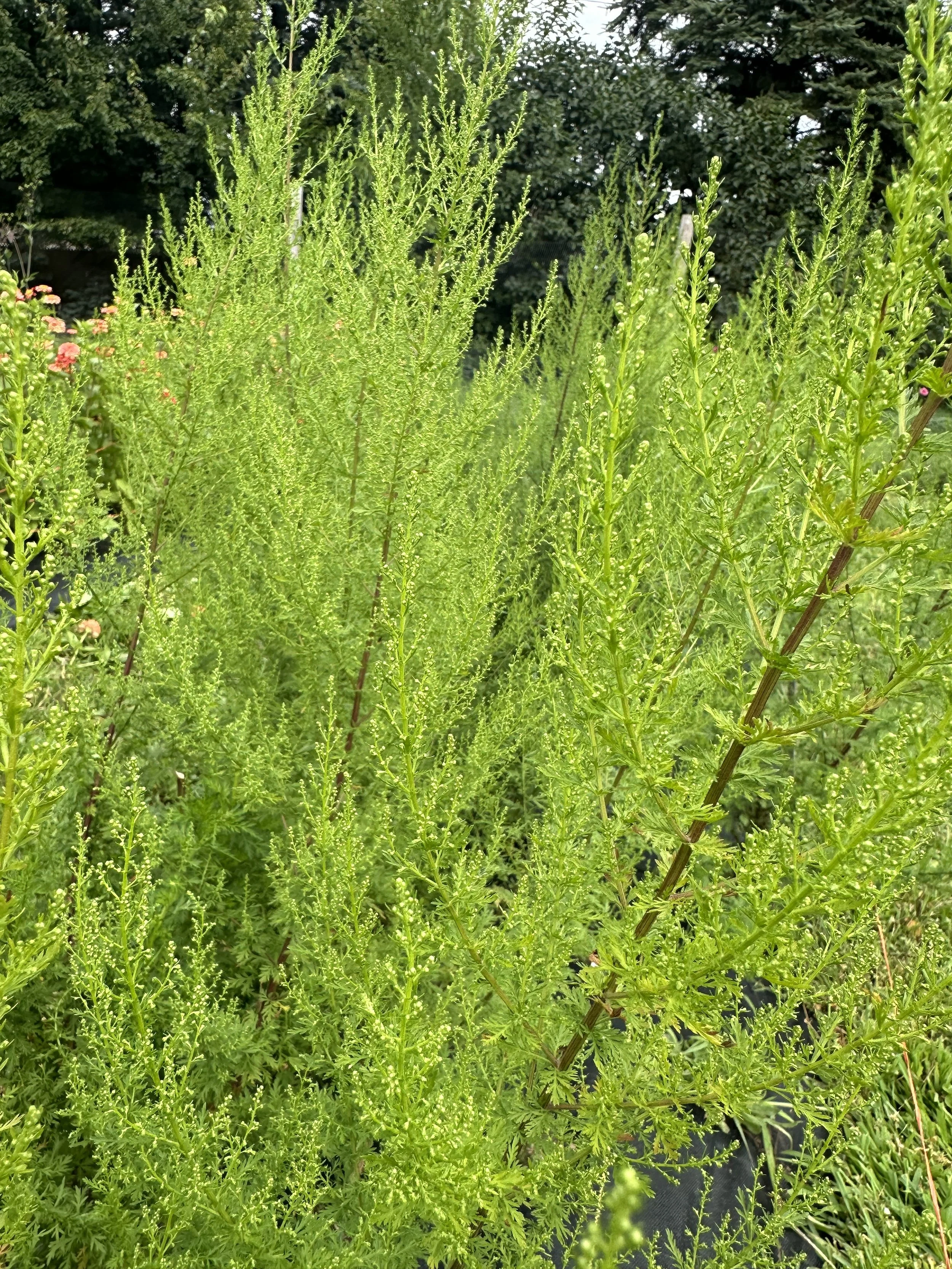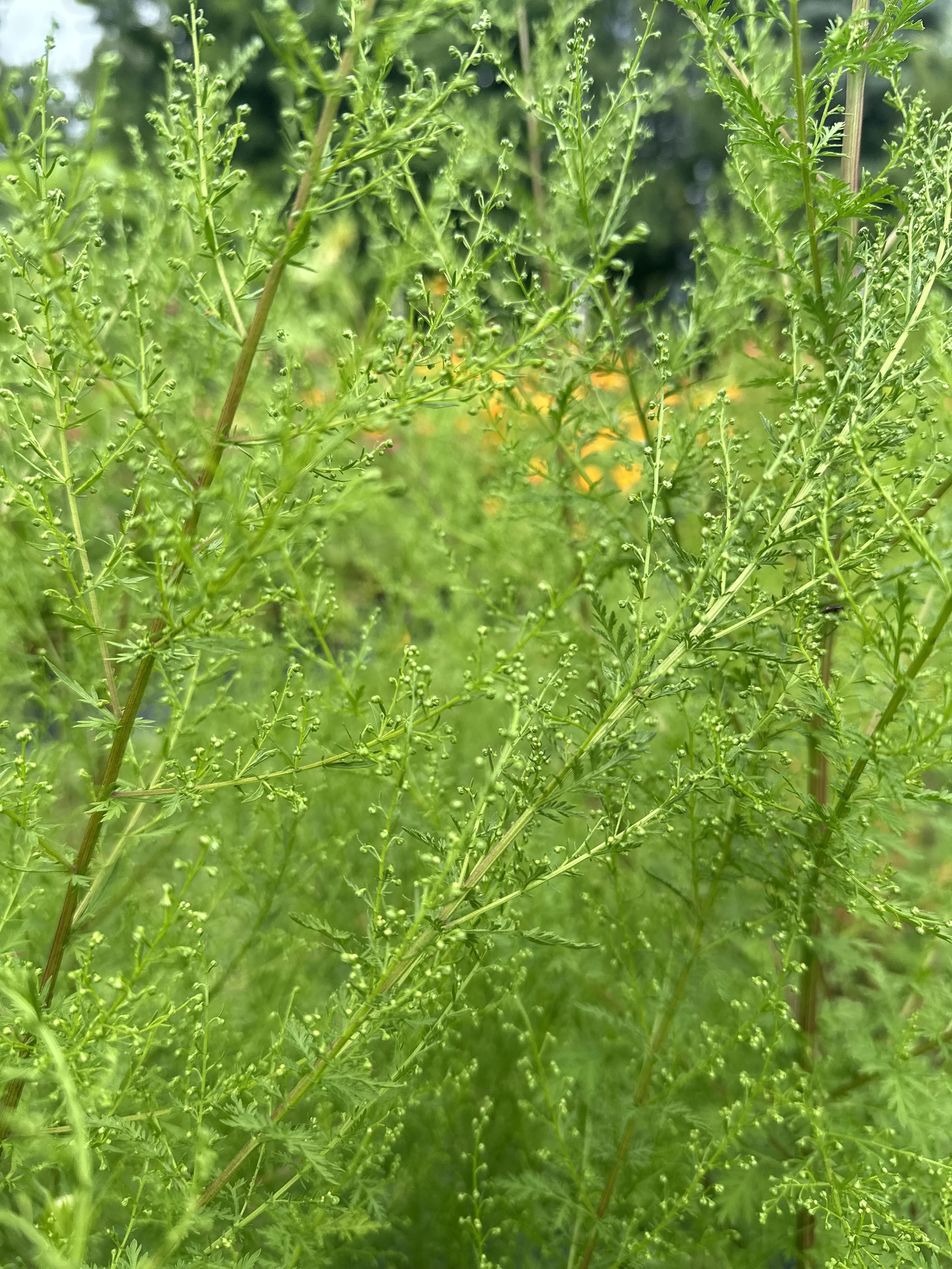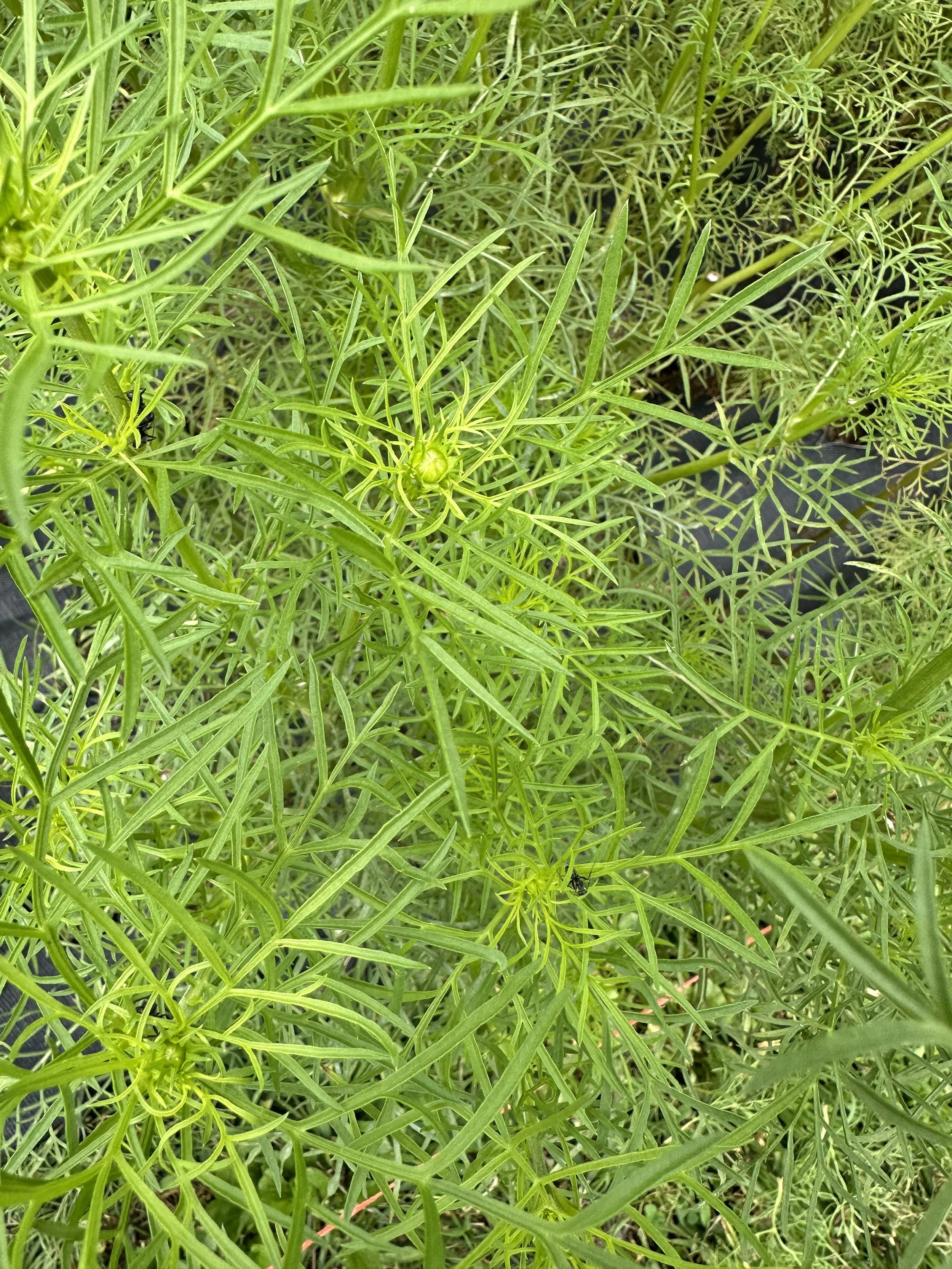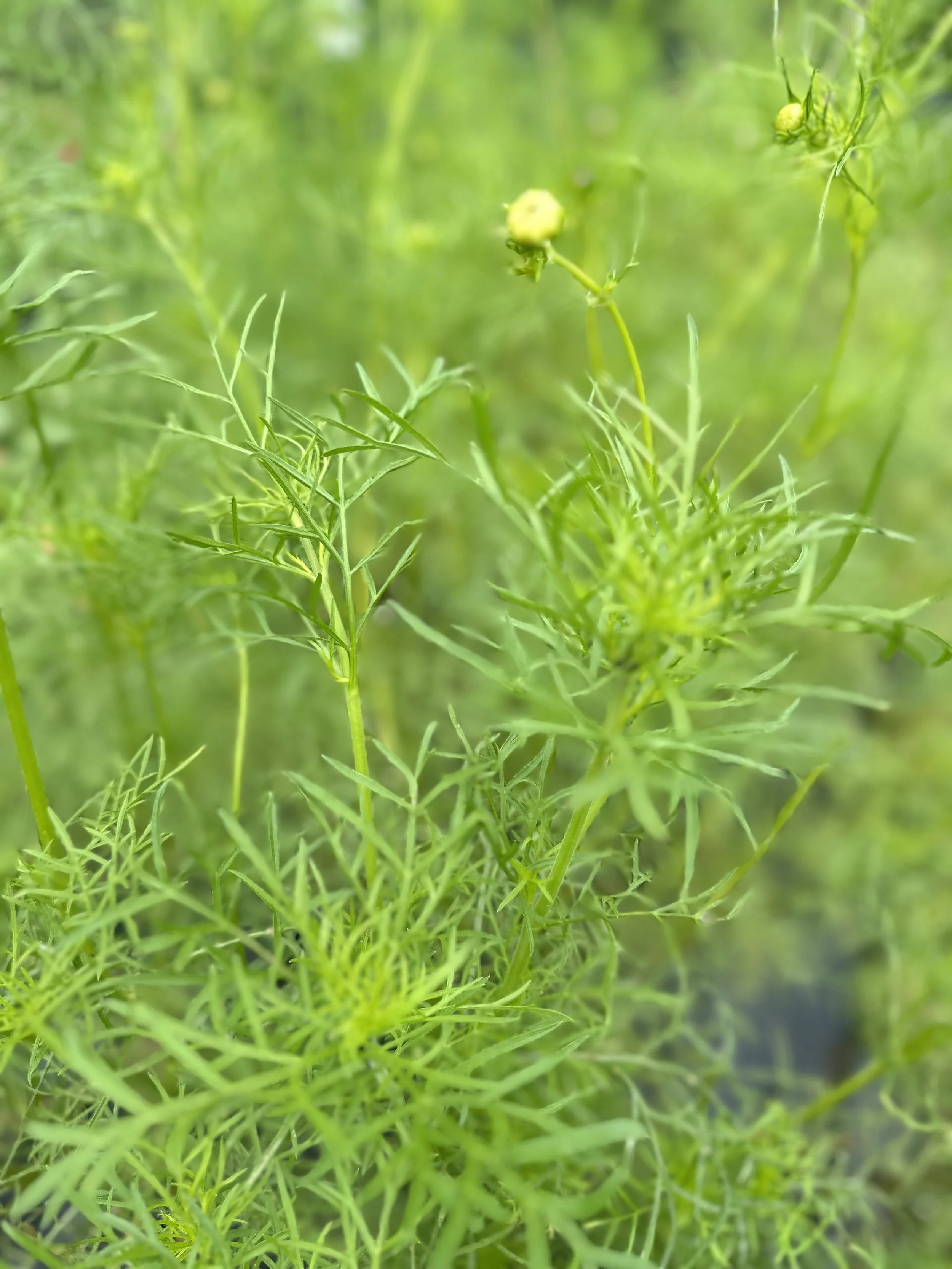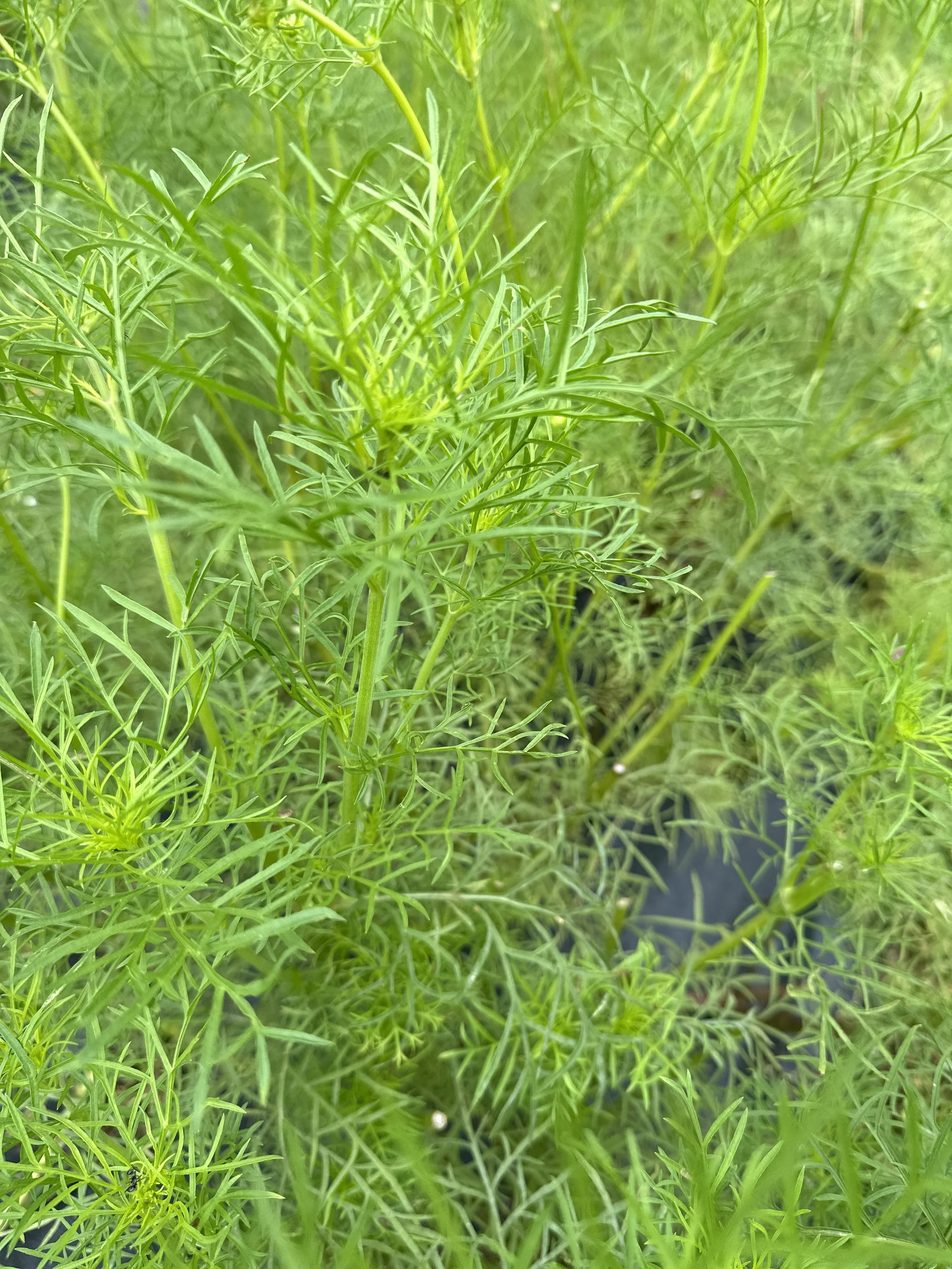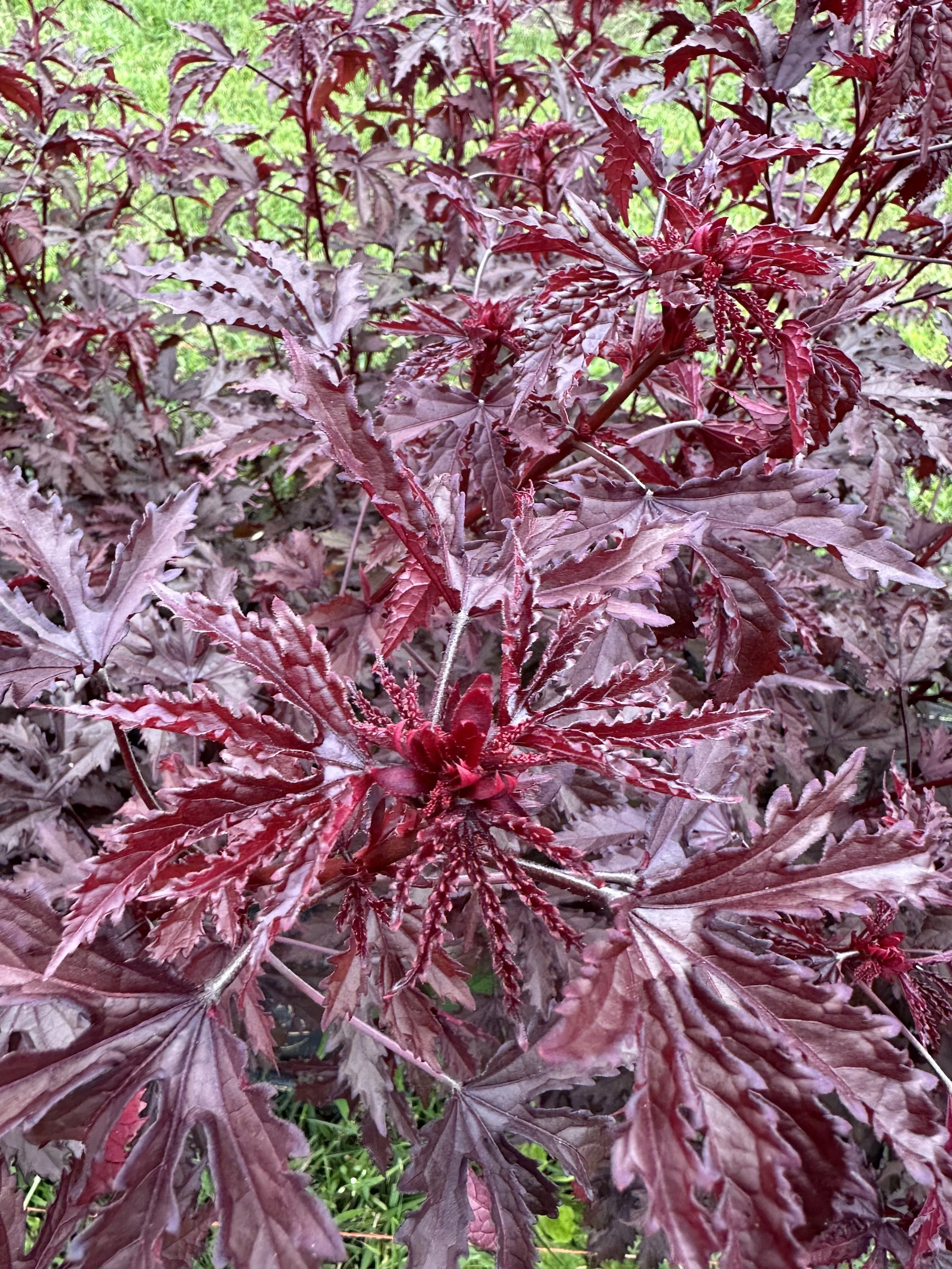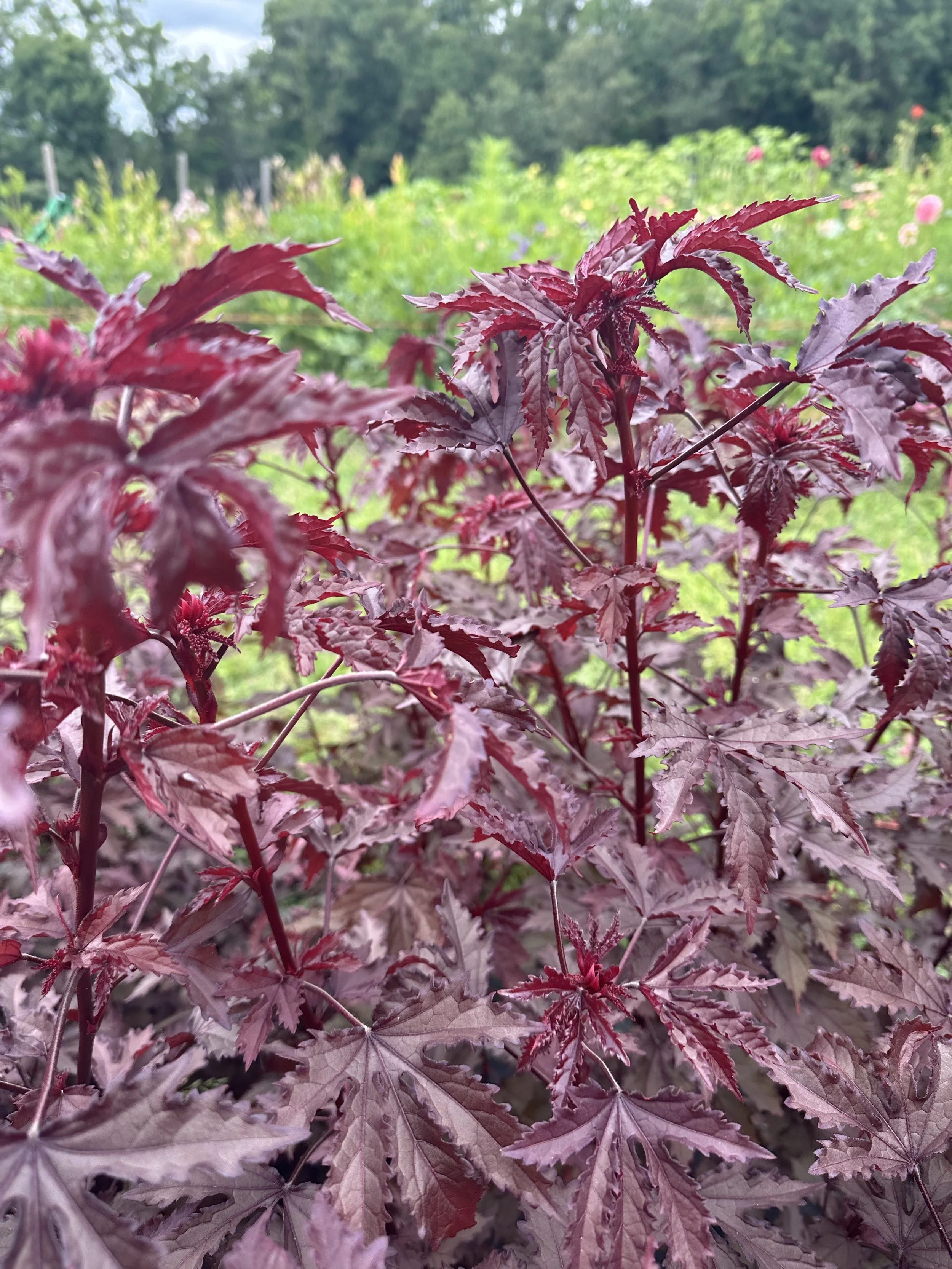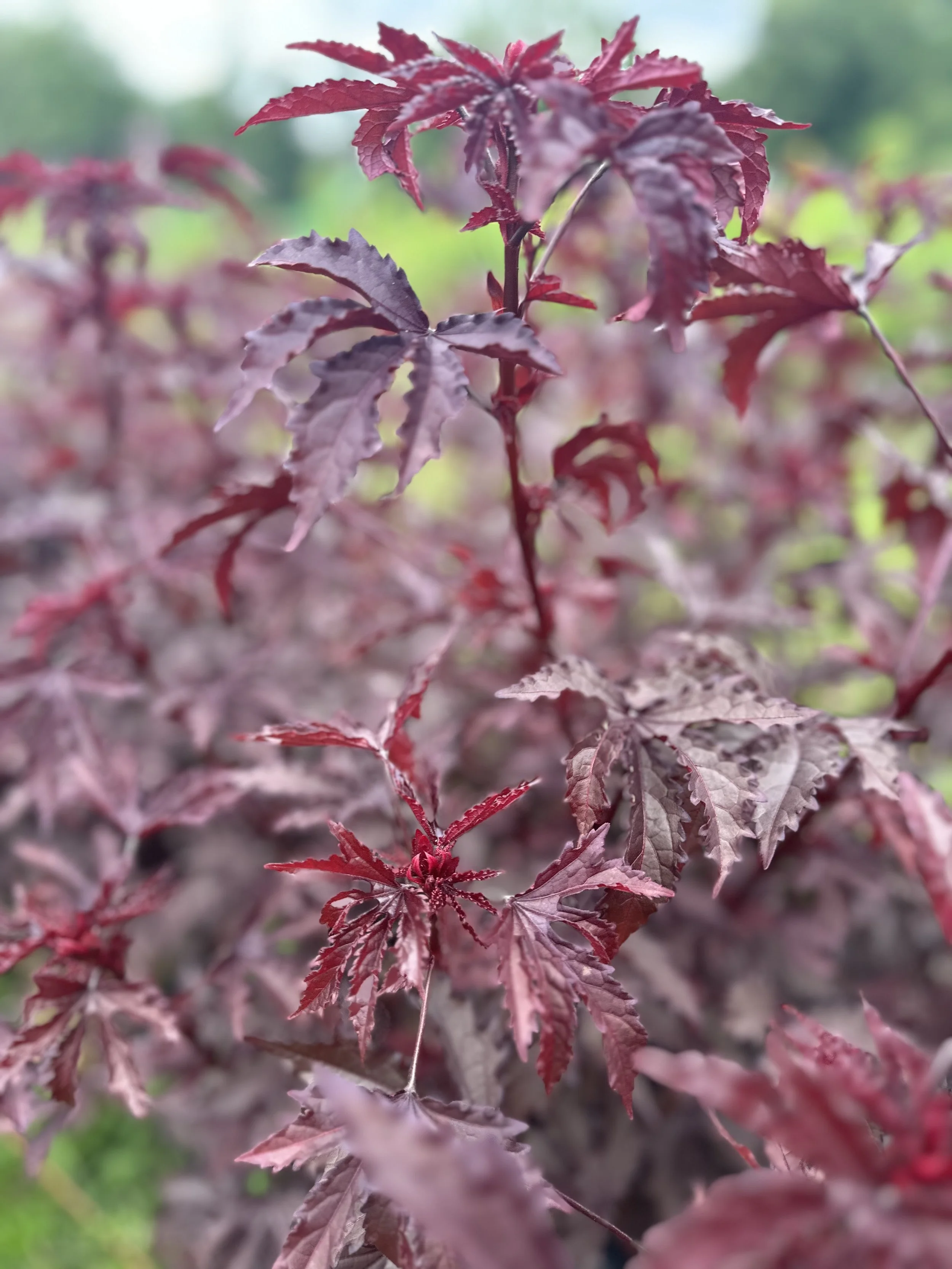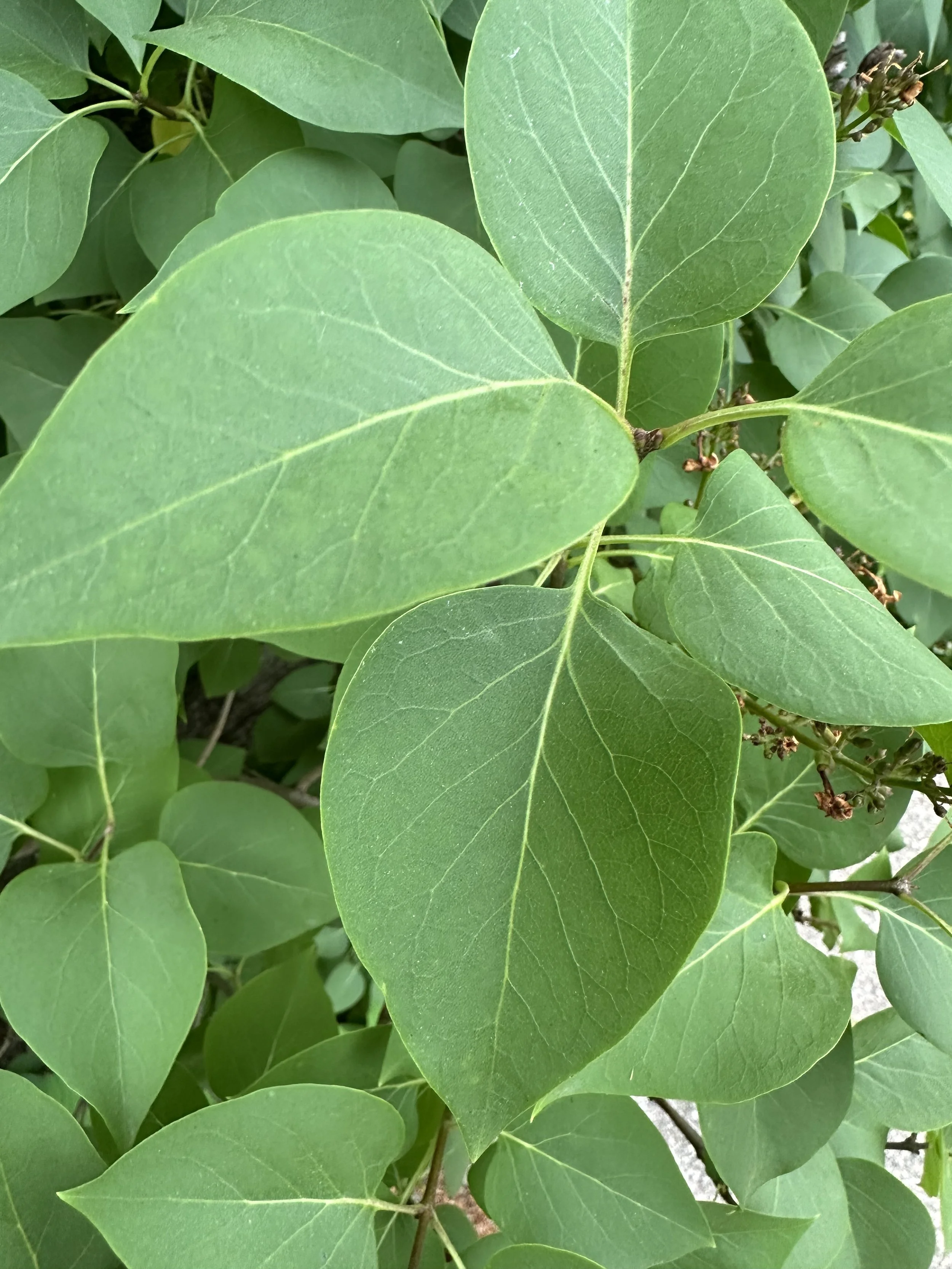My Favorite Foliage to Grow
Easy to grow foliages that add impact, structure and scent to your flowers.
When it comes to putting bouquets together, everyone has a unique style. If you asked what my style was I would define it as a sort of wild and whimsical organic feeling… like you went out into a wildflower field and scooper up a bouquet of blooms. I think part of what makes it feel wild and whimsical, is incorporating the use of foliage. It’s a “must have” for any bouquet.
It’s really up to personal preference and I know there are many people who don’t use much foliage in their bouquets, but to me it’s a winner because not only does it add color contrast, texture and structure for a wild and organic looking bouquet, but it can also add fragrance!
Did you know that many of our favorite summer flowers don’t have a fragrance to them? Not like that of a peony or rose anyways. Flowers like dahlias, sunflowers, zinnias, celosia, strawflowers, ammi, cosmos…. the list could go on… none of them have a floral scent.
Given that flowers are meant to be experienced with our senses, adding some fragrance from foliage has become one of my “go-to” components when putting bouquets together.
Today, I wanted to share a few of my favorite foliages that make a wonderful impact when added to a bouquet.
Basil
This isn’t your kitchen basil (although honestly, you could probably use that if you have a plethora of it) but basil is hands down my favorite foliage to grow for a few different reasons. Every time I put it in a bouquet people always, without fail, ask me what smells so good… and it’s always the basil.
It’s a versatile option because there are a number of varieties to choose from that offer different scent and color, making it an easy to use throughout the summer and into fall by succession planning.
There are two that I use over an over:
Mrs. Burns Lemon Citrus gives the most refreshing yet sweet citrus scent. It has vibrant green leaves on strong green stems and as it matures beautiful soft purple spikes and flowers show up, making it the perfect option for those earlier and mid-summer bouquets. It works beautifully with bright colors as well as soft pastels, both in warm tones and cooler ones.
Cinnamon Basil is the second one that I just can’t seem to grow enough of. This basil has a sweet smell of cinnamon, making it a slightly savory or earthy addition to a bouquet. It’s leaves are darker in green with hints of deep purple as it ages, and striking purple spikes and flowers sit atop strong deep purple stems. This is the perfect option for bouquets in late-summer and fall, or in general when deeper and moor moody shades are the aesthetic.
One thing to note when harvesting is that basil tends to be a bit wimpy… or rather sensitive to when it’s harvested. I harvest in the morning during the cooler part of the day or in the evening and stems go right into a bucket of fresh water. I’ve found basil has a wonderful vase life if you give it fresh cuts every couple days with clean water.
Mountain Mint
Is there anything that says “summer” more than the fresh smell of mint? Whether in fresh fruit salads, diffused in water or muddled in your favorite drink, it’s hard not to love. When it comes to using it as foliage in bouquets, it carries that same love with it.
While I’m sure there are many mint varieties you could use, I tend to look for those that have the adequate height because I’m looking for long and strong stems. Therefore, mountain mint is my go-to.
I grow a variety known as “Hairy Mountain Mint” because it offers tall strong and lean leaves which I find to be ideal for adding foliage without too much green (... if that makes sense). This is another one that when it’s in a bouquet or arrangement, customers notice. It’s sweet smell, almost like a spearmint, adds an invigorating scent without being overpowering.
Mountain mint also has an incredible vase life. I’ve had mint standing strong in a vase long after the rest of the blooms fade, so it’s a workhorse for foliage!
Now, the one thing I’ll say is that mint is SO easy to grow that it can quickly overtake a spot in your yard or garden if it’s happy. It’s a perennial here in my 6a zone and I was shocked to see how well the mint I planted in my first year came up in its second year. If you’re concerned about it taking over space, this could easily be one to plant in a raised bed.
Sweet Annie
A new-to-me foliage for this season is Sweet Annie, and I’m here to say that it will be a forever staple in the field from here on out. Not only does it germinate and transfer out to the garden easily, but it adds a whimsical type of foliage for any bouquet with the most beautiful scent that is a mix between sugary candy and pine. I know… that might seem like a random combination but somehow it just works.
As the season progresses and the plants mature, the wispy branches are loaded with small sed pods at the end creating a wonderful textural foliage. It’s a perfect option for any time during the season, but especially for those late-summer or fall bouquets.
Cosmos
You’ve heard me mention that cosmos are one of the easiest summer flowers to grow, but they aren’t just a winner when it comes to the flowers because their foliage also makes the mark for an easy option to add something special to arrangements. It’s unique texture that can be used to complement other foliage in an arrangement and given it’s whimsical nature it can be a nice contrast to flowers that carry more focal dominance, like dahlias, giant zinnias, etc. . The way the leaves expand out in delicate patterns almost give a web-like feel to them and they offer a soft foliage option.
The color is a vibrant shade of green that works lovely with all colors throughout the growing season and perhaps the best part is that it easily reseeds itself year to year so once you have a spot for it you won’t need to continue starting seeds for it!
Mahogany Splendor Hibiscus
So far I’ve shared foliage that (mostly) comes in varying shades of green. Given that many flowers tend to be the colorful part of a bouquet, foliage tends to be associated with “greenery”. While that’s true, there are some foliages that are definitely NOT green and they’re worth thinking about if you want to make sure you have visual interest through the later part of the summer and fall.
Case in point, Mahogany Splendor Hibiscus.
This incredibly rich (you guessed it) mahogany color foliages creates immediate impact in any bouquet. It’s a must-have for fall colors and for those arrangements when you’re working with a moodier color aesthetic. It grows on tall deep-colored stems with gorgeous fan-like leaf clusters at the top.
I have noticed that sometimes, when not harvested properly, it can be a bit wilted. It’s best to wait until leaves are leathery in nature and to dip in hot water for a few seconds when harvested. It might seem like a high maintenance approach, but gosh is it worth it
Perennials & Shrubs
Now for this category, I don’t have specifics but it’s more so to encourage you to look around your own yard, landscaping and local areas to see what else you can find to use for foliage (with permission, of course).
There are incredible plants growing all around us and while we might not always think about how we can use them, it doesn’t mean we can’t!
For example, a few of my favorite perennial plants and shrubs to use for foliage are what I have growing already, including lilac foliage, baptisia foliage, viburnum branches, and even things such as boxwood cuttings or tree branches. Get creative! The goal of foliage is to add visual interest and structure to bouquets and arrangements, so the options are endless!
These are just a handful of options, but you can see how the world of foliage can be just as inspiring to explore as the flowers themselves. I encourage you to give one of these a try - you won’t be disappointed!
Happy growing, friends!

